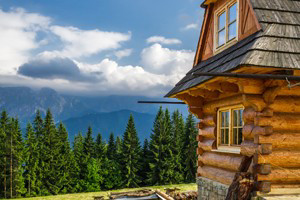- The Lakota are one of three main subdivisions of the Great Sioux Nation.
- Great Plains buffalo herds provided the Lakota with food, shelter, and clothing.
- Legendary Lakota figures include Crazy Horse, Black Elk, and Red Cloud.
- Today, thousands of Lakota Sioux live on Pine Ridge Reservation in the Black Hills.
Overview
The Lakota Sioux Nation can be broken down into 3 subdivisions: the Lakota, Dakota, and Nakota.
The Lakota tribe consists of seven bands that lived throughout the Great Plains, the largest and most famous of being the Oglala Sioux Tribe.
During the Treaty of Fort Laramie, in 1851, traditional territory claims were laid out for several Native American tribes, including the Lakota Sioux, and as a result, the Black Hills of South Dakota became the center of the Great Sioux Nation. As part of the treaty, the tribes guaranteed safe passage for settlers in exchange for an annuity and permission to build roads and forts on their lands.
Sadly, in 1874, the treaty was violated when gold was discovered in the Black Hills. General George Custer and his army entered the area, sparking the beginning of many devastating battles.
Culture/Sacred Lands
Great Plains buffalo herds were crucial to the Lakota's day-to-day survival. Because bison provided food, shelter and clothing, the Lakota lived a migratory existence, moving their tipis as they followed the buffalo.
Family was extremely important and children especially received focused care and attention. Lakota men were allowed to take more than one wife if he could provide for and defend his entire family. Lakota women were in charge of the tipi and family life.
The Black Hills remain a sacred area for the Sioux. Many legendary Lakota figures experienced their vision quests here. Through music and dance, the Lakota communicated with the spirit world. The Sun Dance was one of the most important spiritual rituals.
For Lakota men, engaging in warfare was also vital as a rite of passage and sign of honor.
Wars/Warriors
After General Custer discovered gold in the Black Hills, and settlers flocked to the area, a series of battles took place between the Lakota and the US army.
Famous warriors, chiefs and holy men such as Crazy Horse, Red Cloud and Black Elk did their best to defend the sacred lands and protect their people and heritage.
Famous battles include The Battle of Little Big Horn, when several Native American tribes defeated General Custer and his army, and the Fetterman Massacre, led by Oglala Sioux warrior, Crazy Horse.
However, the most devastating battle involving the Lakota Sioux Tribe was the Wounded Knee Massacre that took place on the Lakota Pine Ridge Indian Reservation in 1890. During the battle, the US 7th Cavalry killed more than 150 Lakota men, woman and children.
Present Day
Today, thousands of Lakota Sioux live on the Pine Ridge Reservation and the Rosebud Reservation. Lakota cultural influence continues to thrive and many powwows and other events take place each year, celebrating Lakota history and heritage. Black Hills visitors are encouraged to explore the museums, monuments, and memorials to learn more about the Lakota Sioux:



